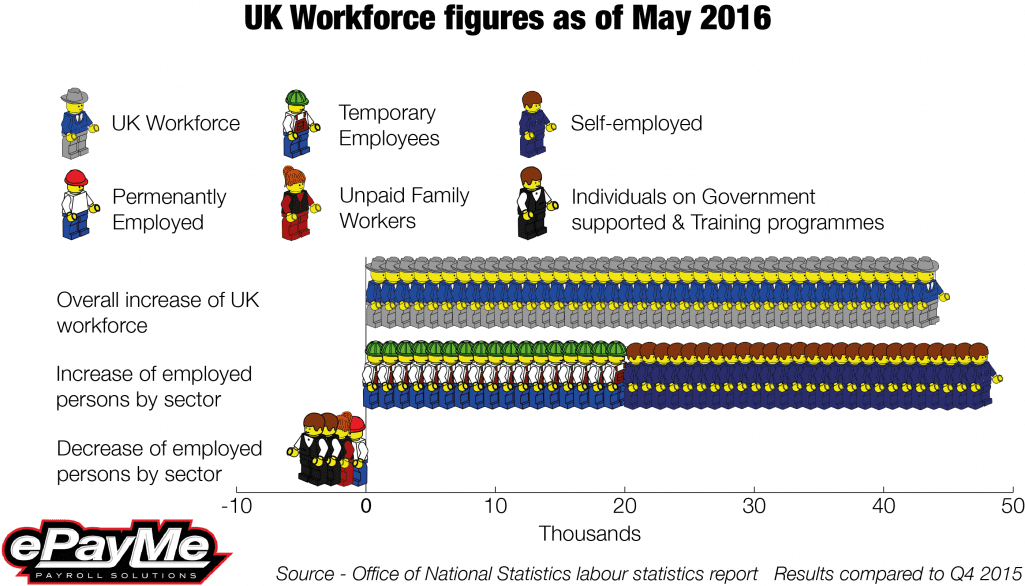
NS Labour market figures out today show that the UK workforce has increased due to an upsurge in self-employment and temporary workers. 20,000 more people are choosing to work self-employed, plus 28,000 more are working on a temporary basis. The figures are based on a comparison between Q4 2015 and Q1 2016.
Commenting on today’s employment figures, Julia Kermode, CEO of FCSA said: “Today’s figures clearly demonstrate just how important the flexible workforce is to UK plc. With the uncertainty around the EU referendum companies seem to be turning to temporary workers for help and true to form, the flexible workforce is keeping the economy running.
“The dynamics of work are clearly changing so it is more important than ever that the Government acknowledges these trends and works harder at supporting this flexible contingent group of workers rather than penalising them with unhelpful and prohibitive legislation. This sizeable and strategically important group of workers contribute hugely to the UK economy and should be recognised and valued.”
- The UK workforce (all in employment) increased by 44k in Q1 2016 (compared to Q4 2015), courtesy of an increase of 20k self-employed and 28k temporary employees (NB: the balancing factors were -1k permanently employed, -1k unpaid family workers and -2k individuals on government supported training & employment programmes).
- Year-on-year (YOY), the 409k increase in the UK workforce came courtesy of +254k employees (of which temporary employees reduced by 33k) and +182k self-employed (minus 20k unpaid family workers and 7k people on government supported training & employment programmes).
- There were 745,000 job vacancies for February to April 2016 – 18,000 fewer than for the 3 months to January 2016 and the largest quarterly fall since April to June 2011. However, the number of vacancies for February to April 2016 was 13,000 more than for a year earlier.
- Regular pay in the three months to March 2016 was 2.1% higher than the same period in 2015. This was slightly lower than the YOY increase in the three months to February 2016 (2.2%). (NB: this barometer does not cover the self-employed).
- Total pay in the three months to March 2016 was 2.0% higher than the same period in 2015. This was slightly higher than the YOY increase in the three months to February 2016 (1.9%). (NB: this barometer does not cover the self-employed).
- Whilst unemployment was virtually static (-2k) in Q1 2016 compared to Q4 2015, there were underlying changes based on the duration of unemployment: those out of work for between 6 and 12 months increased by 20k, whilst those unemployed for more than a year fell by 22k. Year-on-year, unemployment was 139k lower – largely due to a 122k reduction in the number who have been out of work for more than 12 months.
- Youth unemployment remains high, at 13.7% – and was higher than in Q4 2015 (13.6%).